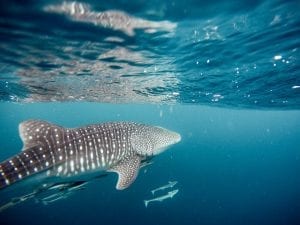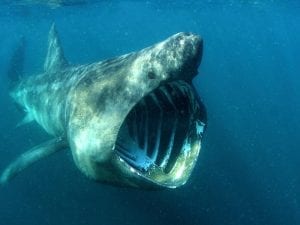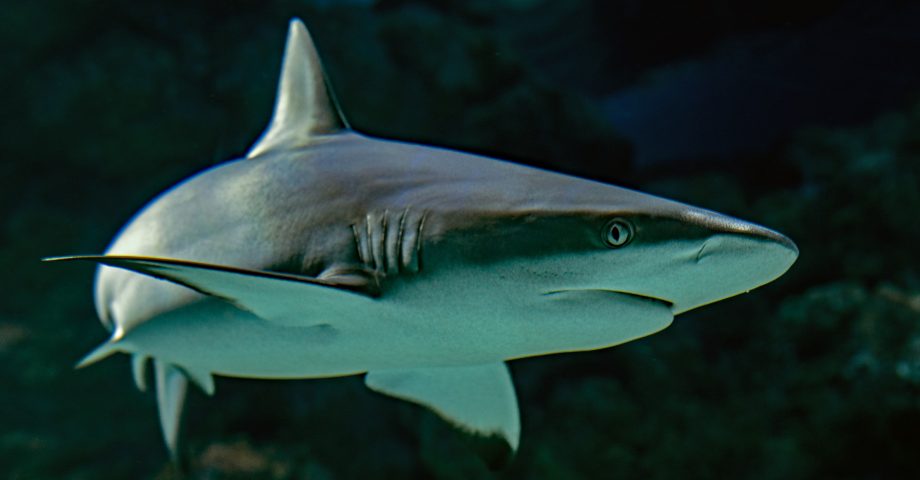Often misunderstood as terrifying monsters, sharks are being hunted close to extinction yet they’re vital to the health of our oceans.
Here’s some interesting facts about sharks to help you appreciate them better…
1. Sharks are amazingly hardy.
Sharks have survived 5 mass extinctions including the one that killed the dinosaurs.
2. There are likely more sharks out there than you think!
Today there are more than 450 known species of sharks living in our oceans.
3. However, they are under threat.
Sadly, nearly one in four of these species are currently threatened with extinction due to human activities like overfishing and shark finning.

4. Sharks are very important to our livelihoods.
Sharks boost local economies through ecotourism. Over the last several decades, public fascination with sharks has developed into a thriving ecotourism industry in places such as the Bahamas, South Africa, and the Galápagos Islands.
5. However, we don’t give them much respect.
Humans kill up to 100 million sharks per year.
Sharks are killed to supply the demand for their fins, which are made into soup and eaten as a status symbol.
You’ve probably eaten shark if you’ve been traveling in Europe and are a fan of fish and chips. Spiny dogfish sharks are popular in the international market.
6. Sharks are inspirational.
Shark anatomy has inspired smart design such as watercraft, cars, and water turbines.
Some researchers are now trying to make artificial shark skin that would reduce friction drag and prevent the accumulation of algae and barnacles in the water and even prevent bacterial growth when applied to hospital surfaces.
7. Some sharks are relatively ‘new’.
The megamouth shark was only discovered in 1976, and fewer than 100 of these rare sharks have ever been seen. It grows to an average of 16 feet and siphons plankton out of the water to feed.
Even more recently was the discovery of the pocket shark, a 5-inch shark found in the Gulf of Mexico. It glows under the water to attract prey.
8. Some sharks are seriously weird!
Hammerhead sharks’ eyes are on the sides of their heads, so they have nearly a 360-degree sightline. Their panoramic view of the undersea world is inhibited by two blind spots, one in front of the snout and the other directly behind the head.
9. Sharks are light, but amazingly built.
Sharks’ skeletons are made of pure cartilage and muscle. Since it’s half the density of bone, this makes the shark lighter and more flexible.

10. A shark doesn’t need the dentist.
Shark teeth are resistant to cavities. They’re covered in fluoride, an enamel known as fluorapatite. This material is resistant to acid created by bacteria.
Sharks also go through several sets of teeth in their lifetimes, shedding and growing new teeth periodically.
11. Shark teeth are always likely to vary.
Not all sharks have the same type of teeth, mako sharks have very pointed teeth; while white sharks have triangular, serrated teeth – all leaving a unique mark on their prey. The average shark has 40-45 teeth in up to 7 rows, which they tend to lose regularly and can go through an astonishing 30,000 teeth in their lifetime!
Because sharks are constantly losing and replacing teeth, experts say there are trillions of teeth sprinkled on the ocean floor.
12. Now that’s a talent!
Sharks can freely move both their upper and lower jaws.

13. Shark breeding is intensive!
Sharks exhibit great diversity in their reproductive modes. There are oviparous (egg-laying) species and viviparous (live-bearing) species. Female sharks can be impregnated by multiple partners at once.
14. Sharks have the ability to clone!
Through a process that has been observed in many animals, sharks can also clone themselves through parthenogenesis, a type of external fertilization. This has been seen in female sharks being kept in captivity.
15. Sharks get feisty early.
Sharks are so tough, their embryos are known to attack one another.

16. The females can be dominant.
Partly because they need to carry shark babies, females tend to be larger in most shark species.
17. It’s the sharks that need to worry about us.
Humans are a far greater danger to sharks than they are to us. There are fewer than 200 shark-human interactions globally every single year.
18. Sharks have varied diets.
Sharks have a variety of feeding habits. Many species of sharks are filter feeders that eat small marine life, such as clams, and many are bottom feeders who use suction to gather food. Only some species of sharks are hunters that attack seals, dolphins, and other large sea creatures.

19. Sharks share much of the sensory experience we do.
Sharks have the same five senses as human beings plus one more. Sharks have an organ in their snouts, ampullae of Lorenzini that allows them to sense electrical fields in the water emitted by other fish and marine life.
20. Shark sleep cycles are intense!
Sharks don’t sleep like humans. Since some species have to continue swimming in order to breathe, instead of falling into a deep sleep, sharks remain semi-conscious.
21. However, some sharks can rest.
Most sharks have to keep swimming to pump water over their gills. However some bottom dwelling sharks such as angel sharks and nurse sharks have an extra respiratory organ called ‘sharks spiracle’ which supplies oxygen directly to the sharks eyes and brain – so they are able to breathe while at rest on the seafloor.

22. How do you tell a shark’s age?
Scientists have been using a new method of determining shark age by using a radiocarbon timestamp found in the vertebrae of sharks left over from nuclear bomb testing in the 1950s and 1960s.
23. Sharks tend to avoid fresh water.
While sharks live in all of the world’s oceans, only a few species are also known to inhabit freshwater lakes and rivers.
24. Sharks can’t make noises.
Despite what you may have seen in Walt Disney’s “Finding Nemo,” sharks definitely can’t talk, even to other fish. Sharks have no vocal cords; therefore, they make no vocal sounds whatsoever. Instead, they communicate through body language.

25. Shark bites are nothing you’d ever want to tangle with.
Large sharks have a bite twice as powerful as that of a lion, and can exert a pressure of up to 40,000 pounds per square inch.
26. Sharks can’t turn well.
Sharks can only swim forward because their fins are stiff and cannot be controlled by muscles.
27. The average shark can hear for incredibly long distances.
They have an amazing sense of hearing. They can hear prey up to 3,000 feet away.

28. Shark skin is remarkably tough.
Sharks have the thickest skin of any animal species – some sharks even have skin that is 6 inches thick!
FAQs about Sharks
Are sharks dangerous?
There’s little doubt that a shark bite can be fatal - but they won’t normally attack humans unless they are confused - you’d be an oddity to them, rather than a free meal.
What are sharks afraid of?
Sharks are, understandably, afraid of anything that poses a threat. Therefore, a shark is much more likely to be afraid of you than you are of it!
Are sharks evil?
Not at all - they are simply acting on instinct, and are not cold-blooded psychopaths - ‘Jaws’ has a lot to do with how people perceive them.
Do you know any fun facts about sharks? Share them in the comments below!
Are you fascinated with the underwater world? Check out these interesting facts about scuba diving…










